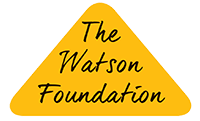Compositors and pressmen in letterpress printing were represented from the middle of the nineteenth century by the Scottish Typographical Association. Before that many towns had local Typographical Societies which provided benefits to sick and out of work members, sometimes as part of wider federations. In 1975 it became part of the Society of Graphical and Allied Trades (SOGAT 75, later SOGAT 82) which later amalgamated with the National Graphical Association (NGA) to become the Graphical Paper and Media Union. In 2004 the GPMU became part of Amicus, and since 2007, workers in the printing and allied trades have been represented by Unite the Union’s Graphical Media and Paper Sector.
The printing side of the lithographic trade was organised from the 1880s by the Amalgamated Society of Lithographic Printers. The origination side was represented by the Amalgamated Society of Lithographic Artists, Designers, Engravers and Process Workers (SLADE) from the 1880s. Both of these unions became part of the National Graphical Association in the 1960s, as did the National Society of Electrotypers and Stereotypers (NSES), which organised printers’ foundry workers such as electrotypers and stereotypers. A number of other unions represented workers such as machine rulers, workers in the papermaking industry, bookbinders, typefounders and various ancilliary workers such as warehousemen.
You can download a list of Scottish trades union archives.
Many documents, which might have been handwritten in other trades, were printed as a matter of course, for example pay claims, or memorials, put to the employers, such as this one addressed ot the master priners in Edinburgh.
Over time the rules and agreements governing the wages and conditions of the workers changed, and the rule books and pay scales were printed for the use of members:
- Edinburgh scale for journeymen, 1878 [PDF 11.9Mb]
- Edinburgh scale for compositors, 1859 [PDF 5.5Mb]
Edinburgh Typographical Society
- Laws & Regulations, 1844 [PDF 13Mb]
Scottish Typographical Association
- Agreements, 1925 [PDF 13.8Mb]
- Rules, 1949 [PDF 19.3Mb]
You can read an account of the dispute 1893 Glasgow Evening Citizen lock-out on the St Bride’s Library blog.
 SPRAT is grateful for support from The Watson Foundation
SPRAT is grateful for support from The Watson Foundation